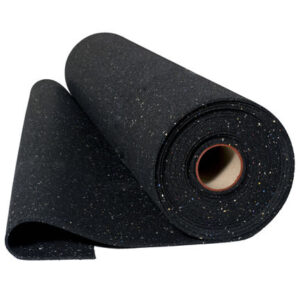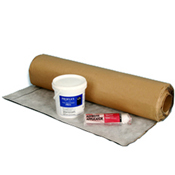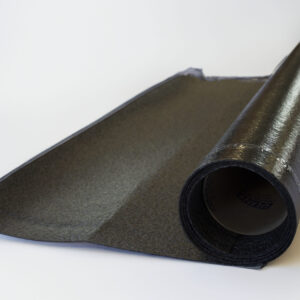How Floor Soundproofing Works
Floor soundproofing reduces sound transmission through decoupling and damping, among other methods. Decoupling involves using soundproofing materials that absorb sound energy to interrupt the direct path of sound vibrations from one part of the floor assembly to another. Damping typically involves applying a material directly to the vibrating surface, which reduces the vibrations by acting as a shock absorber.
Soundproof flooring underlays are designed to address two main types of noise:
- Impact noise: Impact noise is caused by direct contact with the floor. Flooring underlayments can reduce impact noise by absorbing and dissipating vibrations before passing through to the rooms below.
- Airborne noise: This type of noise travels through the air and can pass through floors and ceilings. While acoustic floor underlayment is typically used for impact noise, it can also help with airborne noise. These materials add mass and damping to the floor to reduce sound vibrations. The soundproofing can also prevent sounds from reverberating loudly within your space.
Understanding Impact Insulation Class (IIC)
The IIC rating measures how well acoustic underlayment reduces impact noise in floor-ceiling assemblies. It is calculated using the American Society for Testing and Materials (ASTM) testing methods.
Choosing sound deadening floor underlayment with a higher rating, around IIC 65 or above, is crucial for achieving better noise reduction.
Choosing the Best Acoustic Underlayment by Floor Type
Here’s a quick guide for choosing the right soundproof flooring underlay for your floors:
- Luxury vinyl tile (LVT): Use a dense, moisture-resistant acoustic underlayment like rubber for vinyl floors.
- Laminate: Foam or recycled rubber underlayments are great for absorbing sound and cushioning footsteps on laminate floors.
- Tile: Choose a high-density, sound absorbing underlayment that can handle heavy loads like rubber-based materials.
- Carpet: Select an acoustic floor underlayment like rubber or fiber to help reduce both impact and airborne noise.
- Wood: Cork and recycled rubber are popular for wood floors since they provide noise control and moisture protection.
Learn More About Soundproofing Floors
- What is Impact Insulation Class
- How to Soundproof Hardwood Floors
- How to Soundproof Vinyl Floors
- How to Soundproof Tile Floors
- How to Soundproof Laminate Floors
- Best Flooring to Absorb Sound
- How to Soundproof Carpeted Floors
- How to Soundproof An Attic Floor
- Soundproof Floor Underlayment Guide






